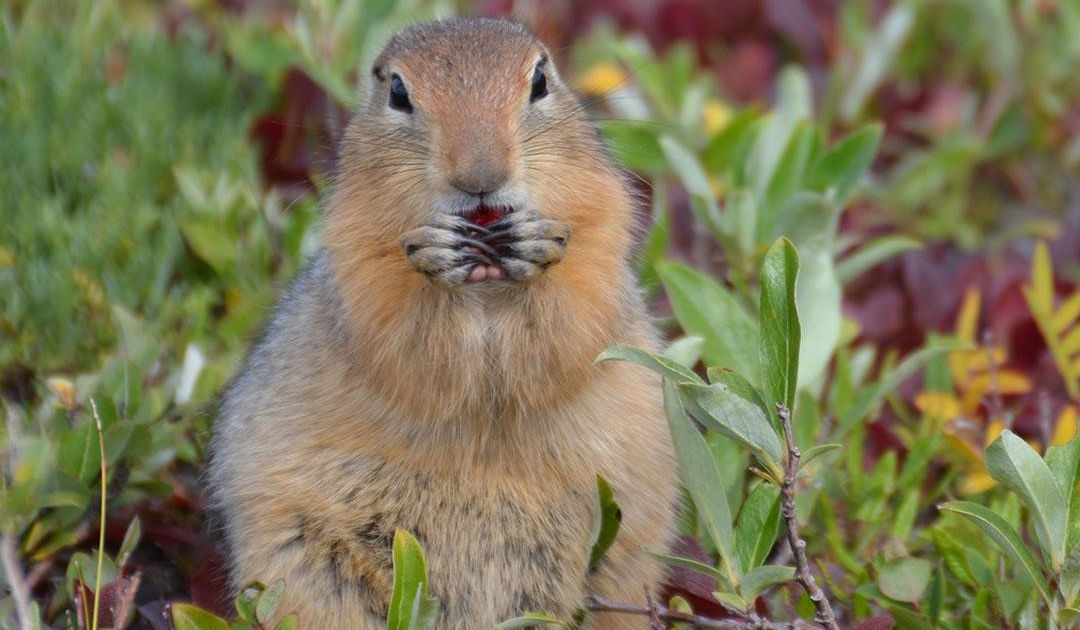
Female Arctic ground squirrels in Alaska are hibernating for ten fewer days than they did 25 years ago. Males, though, still hibernate for the same length of time. This is posing a problem for reproduction
The amount of time that mating-ready female and male Arctic ground squirrels spend together is shortening by four days per decade, disrupting a carefully timed reproduction cycle.
The research, published in Science, compared air and ground-temperature data in Arctic Alaska over a 25-year period with measurements of the body temperature of 199 free-ranging ground squirrels and found that females are awakening from hibernation earlier each year. The research team, led by Cory Williams, of Colorado State University, linked the shorter hibernation period to the earlier onset of thaw caused by climate change. Males, on the other hand, are remaining in hibernation just as long as they used to.
“I think the thing that makes our study unique is that we are looking at a long enough dataset to show the impacts of climate change on a mammal in the Arctic,” Mr Williams, the lead author of the study, said in a news release. “We can show a direct link between changes in temperature and the physiology and ecology of these animals.
The research found that the active soil layer — just above the permafrost — freezes later in the fall, doesn’t get as cold in the middle of winter and thaws slightly earlier in the spring. These changes amount to about a 10-day reduction of the time soil is frozen at a meter deep, have occurred over a “fairly rapid” 25 years, according to Helen Chmura, of the Rocky Mountain Research Station, a US forestry-service facility, and lead author of the study.

Previously, females slept about a month longer than males. Waking earlier gave males enough time to regrow their testes, which shrink at the beginning of hibernation, in an annual pubertal cycle. Now, however, their bodies have less time to ready themselves to reproduce.
“If this continues, we expect to start to see females emerging ready to mate with males before those males are actually fully reproductively mature,” Mr Williams told AFP, a news service.
Arctic ground squirrels are unique among mammals; they spend eight months of the year in hibernation, during which time they lower their body temperature from about 37°C to as low as -3°C, with antifreeze proteins preventing ice crystals from destroying either blood or cell tissue. In this state, known as torpor, their brain and organ activity slows dramatically. At the same time, they are still able to provide enough energy from fat reserves to generate heat to keep tissues from freezing. In spring, they emerge again from their burrows, more than a meter deep, starved and ready to mate.
Shorter hibernation with advantages and disadvantages
Females probably benefit from the shortened hibernation period. They lose less fat over the winter, and in the spring, they can begin foraging for roots, shoots, berries, and seeds to build up new reserves earlier. This could have a positive effect on the health and survival rate of their litters.
However, the males would also have to change their habits for this to happen. If the mating season continues to shorten, the conditions for sufficient offspring will deteriorate.

For ground squirrels, however, a longer active season also increases the risk of being eaten by predators such as foxes, wolves and eagles, for which they are an important food source. This could have implications throughout the food chain if predators move up their breeding season because their prey is available earlier in the year.
The research team cannot yet predict what consequences the shorter female hibernation period will have on the ground-squirrel population. According to Mr Williams, this shows the importance of long-term data to understanding how ecosystems respond to climate change.
Julia Hager, PolarJournal
More about this topic





